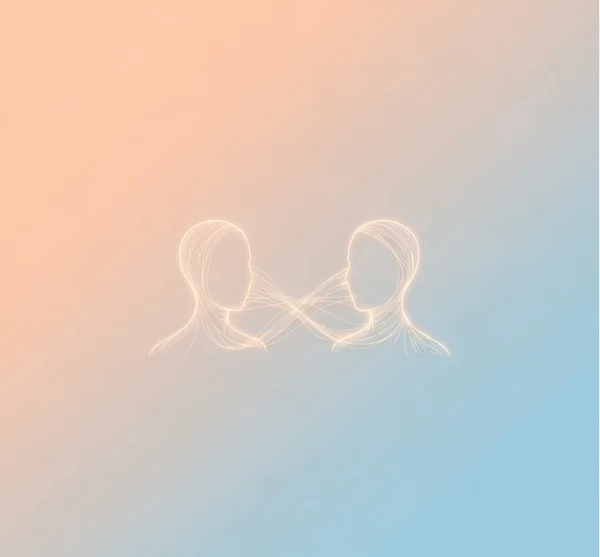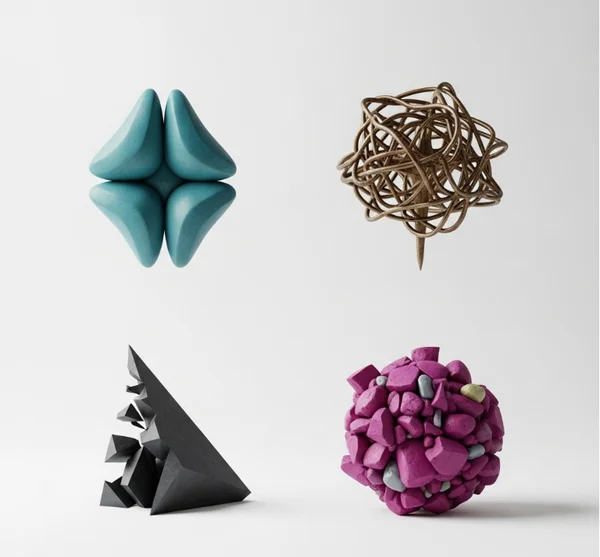The 4 Attachment Styles: A Simple Guide
Ever felt like you're stuck in a loop in your relationships, replaying the same scenes with different people? You're not alone. Many of us wonder why we react the way we do to intimacy, conflict, and separation. The answer often lies in our relational blueprint. What are the 4 types of attachment styles? Understanding this concept is the first step toward decoding your relationship patterns and building healthier, more fulfilling connections. If you're ready to gain clarity, a well-designed attachment style quiz can be an incredibly insightful starting point.
First, What Is Attachment Theory? The Science Behind Our Bonds
Before we dive into the specific styles, it's helpful to understand where this idea comes from. What is attachment theory and why is it so relevant? Developed by psychologist John Bowlby in the mid-20th century, attachment theory proposes that our earliest emotional bonds, particularly with our primary caregivers, create a template for all future relationships.

These childhood experiences shape our internal working models—the unconscious beliefs and expectations we hold about ourselves, others, and the world of relationships. Do we see ourselves as worthy of love? Do we view others as reliable and trustworthy? This foundational framework dictates how we navigate love, friendship, and connection throughout our lives.
The 4 Primary Attachment Styles Explained
Most modern attachment theory research identifies four primary styles. Think of these not as rigid boxes, but as points on a spectrum that describe general tendencies in how we connect with others. How do you know your attachment style? Let's explore each one.

1. Secure Attachment: The Foundation of Healthy Relationships
A person with a secure attachment style generally has a positive view of themselves and others. They feel comfortable with intimacy and are also secure with independence. They are the "anchor" of relationship dynamics.
- Core Beliefs: "I am worthy of love, and I can trust others to be there for me. It's okay to depend on others and to have them depend on me."
- Common Behaviors: They communicate their needs and feelings openly, manage conflict constructively, and offer support to their partners. They are resilient and maintain emotional balance.
- How It Fosters Connection: Their trust and emotional availability create a safe space for healthy relationships to flourish, marked by mutual respect and deep connection.
2. Anxious Attachment: The Craving for Closeness and Reassurance
Also known as anxious-preoccupied, this style is characterized by a deep-seated fear of abandonment. They often have a negative view of themselves but a positive view of others, leading them to seek high levels of intimacy and approval to validate their self-worth.
- Core Beliefs: "I'm worried my partner doesn't love me as much as I love them. I need constant reassurance to feel safe in the relationship."
- Common Behaviors: They may appear "needy" or "clingy," constantly seek validation, become highly sensitive to their partner's moods, and experience significant anxiety when their partner needs space.
- Understanding the Fear of Abandonment: This fear can drive them to prioritize their partner's needs over their own, hoping to "earn" love and prevent being left. Exploring this is a key part of personal growth, and a detailed relationship patterns analysis can provide the first clues.
3. Avoidant Attachment: The Fear of Intimacy and Dependence
Often called dismissive-avoidant, individuals with this style pride themselves on their independence and self-sufficiency. They have a positive view of themselves but a negative view of others in terms of dependency. They tend to suppress their emotions and avoid true intimacy.
- Core Beliefs: "I don't need anyone. Depending on others is a sign of weakness. I'm better off on my own."
- Common Behaviors: They may seem emotionally distant, uncomfortable with sharing feelings, and quick to create space in a relationship, especially after a period of closeness. They often complain about partners being too "needy."
- Why Independence Feels Safer: For them, closeness feels like a threat to their autonomy. They learned that relying on others leads to disappointment, so they built a protective wall of self-reliance.
4. Disorganized Attachment: The Push-and-Pull of Fear and Desire
Also known as fearful-avoidant, this is the most complex attachment style. It's a combination of both anxious and avoidant traits. These individuals simultaneously crave intimacy and are terrified of it.
- Core Beliefs: "I desperately want to be close to others, but I'm afraid I'll get hurt. I can't trust anyone, including myself."
- Common Behaviors: Their behavior can seem erratic or contradictory. They might pull a partner close one moment and push them away the next. Their relationships are often intense and unstable.
- Navigating Internal Conflict: This style often stems from confusing or frightening childhood experiences, leaving them without a consistent strategy for getting their needs met.
How Do I Know My Attachment Style? A Quick Self-Check
Reading these descriptions, you might already see parts of yourself in one or more styles. To gain more clarity, you can start with some self-reflection.

Key Differences at a Glance
This table offers a simplified look at the four styles in action:
| Attachment Style | View of Self | View of Partner | Behavior Under Stress |
|---|---|---|---|
| Secure | Positive | Positive | Seeks support, communicates openly, co-regulates. |
| Anxious | Negative | Positive | Becomes more demanding, seeks excessive reassurance. |
| Avoidant | Positive | Negative | Withdraws, shuts down, distances emotionally. |
| Disorganized | Negative | Negative | Can be chaotic, freezes, or alternates between extremes. |
Questions to Ask Yourself
Consider these questions honestly. There are no right or wrong answers.
- When a conflict arises, is my first instinct to solve it together, run away, or demand a resolution immediately?
- How do I feel when my partner needs time alone?
- Do I believe I have to work hard to keep my partner from leaving me?
Answering these can be revealing. For a more structured and objective look at your patterns, a comprehensive aptitude test for relationshipscan help you explore these questions more deeply and connect the dots.
Your Attachment Style Is a Map, Not a Cage
Discovering your attachment style isn't about putting yourself in a box. It's about being handed a map. This map can explain the terrain of your inner world and help you navigate your relationships with more awareness and intention.

Whether you identify with secure, anxious, avoidant, or disorganized patterns, the most important takeaway is that change is possible. Through self-awareness, conscious effort, and learning new skills, you can move towards "earned security"—building a secure attachment style as an adult, regardless of your starting point. This journey of understanding is the foundation for profound personal growth.
Frequently Asked Questions About Attachment Styles
Can my attachment style change over time? Absolutely. This is one of the most hopeful aspects of attachment theory. While our early experiences are influential, our styles are not set in stone. Through conscious effort, self-reflection, and often with the help of therapy or a deeper understanding from tools like an attachment style test, people can develop an "earned-secure" attachment.
What's the healthiest attachment style? The secure attachment style is considered the foundation for the healthiest, most resilient relationships. However, the goal isn't to be "perfectly secure" all the time. The real goal is to build self-awareness and develop the skills to navigate relationships in a healthier, more conscious way, moving closer to security.
What's the difference between anxious and avoidant attachment? It's a classic push-pull dynamic. Think of it this way: the anxious style fears abandonment and tries to close the distance ("Come closer!"). The avoidant style fears engulfment and tries to create distance ("I need space!"). They are often drawn to each other, creating a challenging but common relationship cycle. A deeper look into your own tendencies can start with a simple quiz.